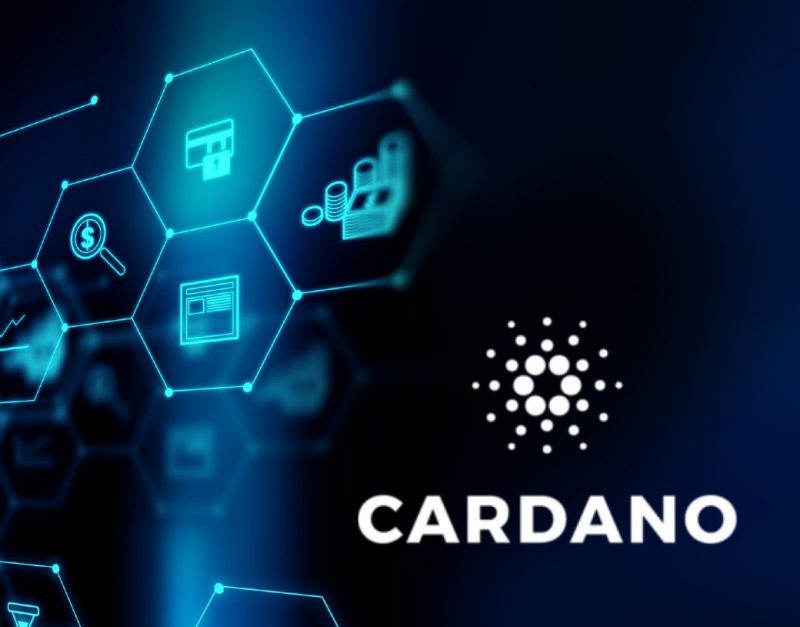Kraken, the prominent crypto exchange, has revealed in its report that Cardano’s (ADA) current price movement combined with its daily transactions could be a bullish indicator.
Cardano recovered life with the Shelley hard fork in July 2020, a full 3 years after the blockchain’s debut, and saw a massive spike, holding a solid position in the top 5 crypto assets by market capitalization for much of 2021.
While ADA’s price is significantly connected with the volume of network activity, according to Kraken’s research, this has not been the case since late 2021, when Cardano’s price failed to keep up with the increase in daily transactions.
Cardano’s strategy and attitude are considerably different from that of its L1 contemporaries, which could provide them a competitive advantage if advancements go well. Importantly, Cardano is a value-driven project that prioritizes community governance, academic peer review, and high-assurance development.
The team at Kraken sure is bullish on Cardano. The reason for their beliefs is explored below.
Cardano’s Ouroboros upgrade
Ouroboros is a Cardano-based blockchain technology that uses Nakamoto-style consensus, similar to Bitcoin, in which nodes agree by following the “longest chain rule.” Unlike Bitcoin’s PoW process, which relies on hash power or energy to generate new blocks, Ouroboros leverages the network’s token (i.e. ADA) to influence how often a node is chosen to generate new blocks.
In addition to security, Ouroboros’ design improved throughput as compared to Bitcoin and Ethereum (7 TPS and 15 TPS, respectively), reaching up to 257 TPS at the base layer in early testing.
Moreover, a slashing mechanism is not required on Cardano due to the nature of the Ouroboros protocol. As a result, the staked monies of delegators are not at risk of being seized by the SPO or the network.
Users can continue delegating their ADA to their preferred SPO from within smart contracts, which is a feature unique to Cardano.
Extended UTXO model
Cardano’s accounting model, which refers to how transactions are processed and wallet/account balances are maintained and updated, is one of the features that sets it apart from most other smart contract platforms.
The capabilities and benefits of the UTXO paradigm drew the IOG team to Cardano, but they also wanted to keep Ethereum’s programmable smart contract functionality. As a result, Cardano uses the Extended UTXO model, which is an expansion of Bitcoin’s UTXO paradigm that allows smart contracts to be used.
The EUTXO model allows users to pay network transaction fees in any user-defined token (e.g. USDC, wBTC, wETH) instead of ADA, which IOG refers to as babel fees.
Concerns regarding dApps
IOG is creating Marlowe, a smart contract language built on top of Plutus exclusively for financial contracts and designed to be utilized by financial contract professionals who do not have programming abilities, to answer concerns about the dApp community.
Cardano’s founding organizations have also partnered with outside development firms like Five Binaries and Runtime Verification to accelerate the development of supporting infrastructure and make smart contract development on Cardano accessible to developers of any language, including Solidity, C++, Rust, and Java.
Cardano’s Web3 developments
Cardano’s Web3 ecosystem is currently in the early stages of development. Despite this, the network is home to a diverse set of projects. Cardano’s mainnet has yet to see many dApps go live, although smart contracts were launched as part of the Alonzo hard fork in September 2021. Cardano’s first DEX, MuesliSwap, became live in early January 2022, and the highly publicized DEX, SundaeSwap, debuted a beta version of its DEX on the network just recently on January 20th.
Part of the reason for the delay in dApp adoption on Cardano is the paradigm shift brought about by the EUTXO model. To accommodate the UTXO architecture, developers must rethink the core logic of many dApps, such as how to construct a liquidity pool for a DEX.
Another important reason for the dApp delay is that developers are waiting for the Plutus Application Backend to be released (PAB). PAB isn’t essential for dApps to start, but it does provide a fundamental set of infrastructure for developers to implement basic dApp capabilities including wallet backend infrastructure and blockchain interaction. PAB also facilitates testing and speeds up dApp development.





